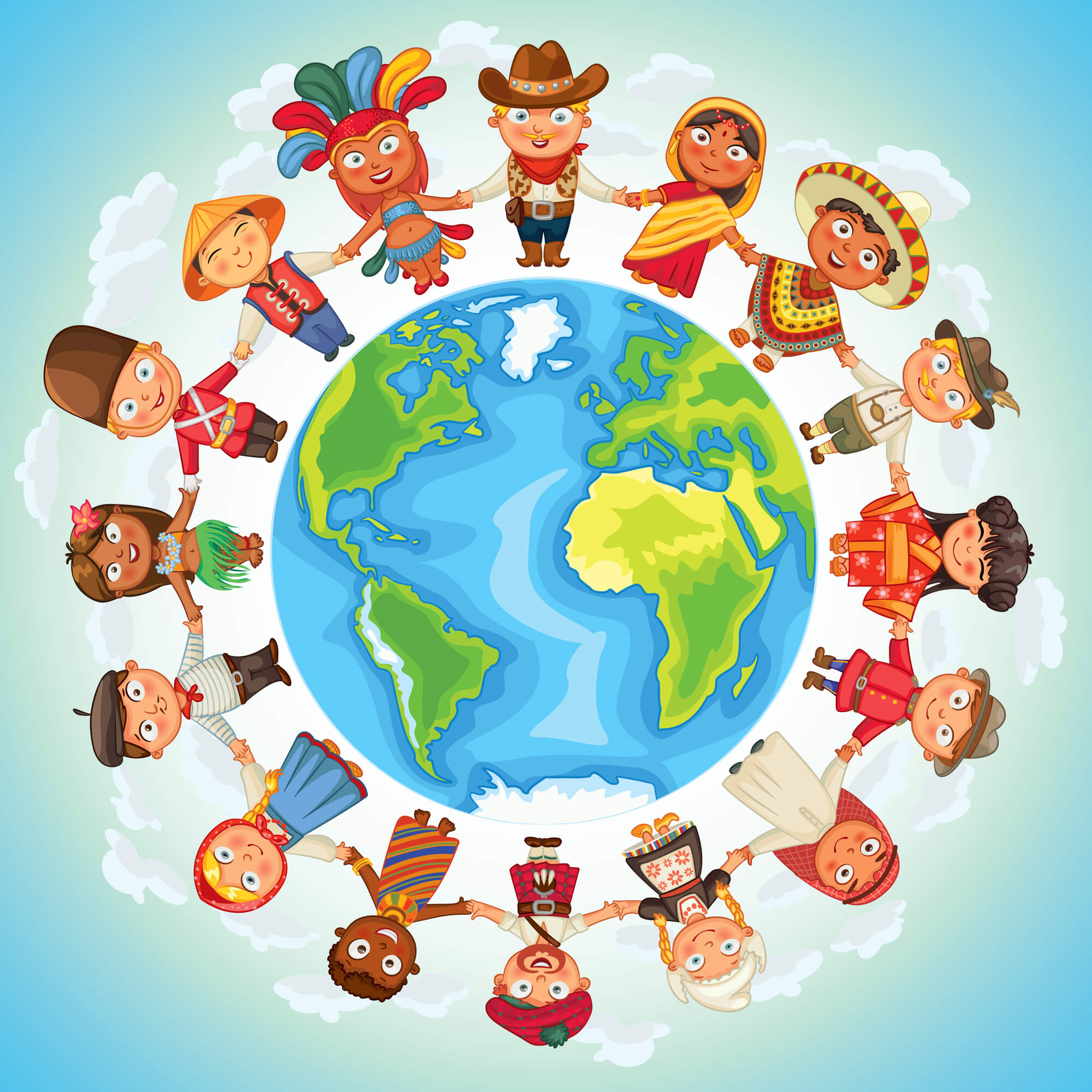Religion, cuisine, attire, lingo, union, and music are all included in culture, which varies around the world.
Language, religion, cuisine, social customs, music, and the arts are all aspects of a particular group of people’s knowledge and characteristics, or culture.
A step further, according to the Center for Advanced Research on Language Acquisition, culture is a set of socially learned cognitive structures, shared patterns of behavior, and social interactions. As a result, culture can be defined as the development of a group identity supported by particular social patterns inside the group.
Sponsered4
According to Cristina De Rossi, an anthropologist at Barnet and University College London, “Culture encompasses religion, food, what we wear, how we wear it, our language, marriage, music, what we believe is right or wrong, how we sit at the table, how we greet visitors, how we behave with loved ones, and a million other things.”
Numerous nations, including France, Italy, Germany, the United States, India, Russia, and China, are renowned for their varied cultures, which continually draw travelers with their rituals, traditions, music, art, and cuisine.
According to Arthur Asa Berger, the Latin word “colere,” which meaning to tend to the ground and flourish, or cultivate and nurture, is the source of the word “culture.” According to De Rossi, “it shares its etymology with a number of other words related to actively encouraging growth.”
Sponsered4
According to Khan University, the phrase “Western culture” has evolved to refer to the cultures of both European nations and those that have been significantly impacted by European immigration, such as the United States. The Classical Period of the Greco-Roman era (the fourth and fifth centuries B.C.) and the spread of Christianity in the fourteenth century are the origins of Western civilization. The Latin, Celtic, Germanic, and Hellenic ethnic and linguistic groupings are additional influences on Western culture.
Over the past 2,500 years, numerous historical occurrences have influenced Western society. According to Stanford University, the emergence of a number of frequently at war states in Europe was made possible by the fall of Rome, which is frequently dated to A.D. 476.
Europe’s population was reduced by one-third to fifty percent during the Black Death in the 1300s, drastically altering civilization. According to Ohio State University historian John L. Brooke, the epidemic caused Christianity to flourish in Europe and place a greater emphasis on apocalyptic themes. As elites were compelled to pay more for limited labor, working class survivors gained more power. Additionally, the disruption of East-West trade channels sparked new research and ultimately led to European incursions into North and South America.
Sponsered4
Nowadays, practically every nation in the globe is affected by Western culture.
Eastern culture mainly refers to the customs and traditions of the Indian subcontinent and the nations of Far East Asia, which include China, Japan, Vietnam, North Korea, and South Korea. According to a 2012 study that appeared in the journal Rice, rice cultivation and harvesting had a significant impact on Eastern culture during its early development, just as they did on the West. In comparison to Western culture, there is generally less separation between secular society and religious ideas in Eastern culture.
However, this broad definition encompasses a huge variety of customs and history. For instance, according to Britannica, Hinduism generally replaced Buddhism from the 12th century, despite Buddhism’s origins in India.
Sponsered4
As a result, Hinduism overtook Buddhism as the main cultural force in India, while Buddhism persisted in China and Japan. Religion was also influenced by pre-existing cultural notions in these regions. Jiahe Liu and Dongfang Shao claim that Chinese Buddhism, for instance, draws from Taoism, which emphasizes compassion, austerity, and humility.
These cultures have influenced one another over the course of centuries of encounters in this area, both friendly and hostile. For instance, between 1876 and 1945, Japan managed or occupied Korea in some capacity. According to History.com, many Koreans were compelled or under pressure during this time to exchange their names for Japanese ones.
The term “Latin culture” refers to a large geographic area. The regions of Central America, South America, and Mexico where Spanish or Portuguese is the predominant language are referred to as Latin America. Starting in the 1400s, Spain or Portugal began colonizing or influencing all of these locations. Though some historians, including Michael Gobat, the author of “The Invention of Latin America: A Transnational History of Anti-Imperialism, Democracy, and Race, (American Historical Review, Voll 118, Issue 5, 2013), dispute this, it is believed that French geographers used the term “Latin America” to distinguish between Anglo and Romance (Latin-based) languages.
Sponsered4
The cultures of Latin America are therefore very diverse, and many of them combine indigenous customs with the Spanish language and the Catholicism introduced by Spanish and Portuguese invaders. As a result of Africans being brought to the Americas as slaves beginning in the 1600s, many of these civilizations were also affected by African cultures. In Brazil and the Caribbean countries, these influences are particularly potent.
The spread and evolution of Latin culture are ongoing. The Day of the Dead, which is observed on November 1 and 2, is a wonderful illustration. It is a celebration honoring the deceased.
The tradition was established to America by Mexican immigrants, and in the 1970s, artists and cultural events made Da de los Muertos a focal point for people to celebrate their Chicano (Mexican-American) ancestry, according to the Smithsonian American Art Museum. The American public is now familiar with the holiday.
Sponsered4
The Arabian peninsula and the eastern Mediterranean are roughly included in the Middle East. According to Britannica, the North African nations of Libya, Egypt, and Sudan are also occasionally listed. Another word that incorporates a wide range of cultural customs, religious beliefs, and way of life is “Middle Eastern culture.” Numerous languages, including Arabic, Hebrew, Turkish, and Pashto, are spoken in the area, which is also the birthplace of Judaism, Christianity, and Islam.
Although there is a wide range of religions in the Middle East, Islam is the most common and has had a considerable impact on the region’s cultural development.
In the first half of the seventh century, Islam first appeared in what is now Saudi Arabia. The death of the founder of the faith, Muhammad, in 632, was a pivotal time for the culture and civilization of the Middle East, according to the Metropolitan Museum.
Sponsered4
Some followers thought the next leader should be one of Muhammad’s close friends and confidants, while others thought Muhammad’s lineage should be the source of leadership. As a result, there was a split in Islam between Sunni Muslims and Shia Muslims, with Sunni Muslims believing that leadership should not be passed down through the family. According to the Council on Foreign Relations, over 85% of Muslims worldwide now are Sunnis.
According to Britannica, the Ottoman Empire, which dominated a U-shaped ring surrounding the eastern Mediterranean between the 14th and early 20th centuries, also had an impact on Middle Eastern civilization. The Ottoman Empire’s former dominions are noted for having distinctive architecture with Persian and Islamic influences.
According to the Natural History Museum in London, Africa has had human occupancy for the longest period of any continent. Humans began their global migration there some 400,000 years ago. Tom White, the senior curator of non-insect invertebrates at the museum, and his group were able to learn this by examining the creatures that once resided in Africa’s ancient lakes. This study offers the earliest proof of hominin species in the Arabian peninsula as of the writing of this article.
Sponsered4
African cultures differ not just across country borders but also inside them. The enormous number of ethnic groups spread across the 54 countries on the continent is one of this culture’s distinguishing characteristics. For instance, Culture Trip estimates that there are more than 300 tribes in Nigeria alone. Africa has been importing and exporting its culture for millennia; according to The Field Museum, East African trading ports served as a vital conduit between the East and the West as early as the seventh century. Due to the transportation of commodities and raw resources from landlocked regions of the continent, complex metropolitan hubs were created along the eastern coast.
One description of African culture as a whole would be insufficient. According to Britannica, while Sub-Saharan Africa has historical, geographical, and social traits that are substantially distinct from those of North Africa, it also has deep linkages to the Middle East.
The Maasai of Tanzania and Kenya, the Zulu of South Africa, and the Batwa of Central Africa are a few classic Sub-Saharan African cultures. These cultures’ customs developed in very diverse circumstances. For instance, one of the ethnic groups that typically forages in the jungle is the Batwa. On the other hand, sheep and goats are herded on open range by the Maasai.
Sponsered4



